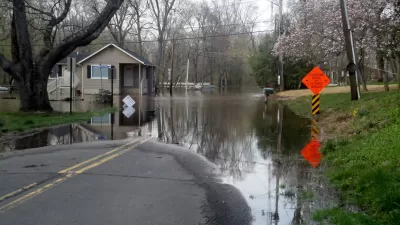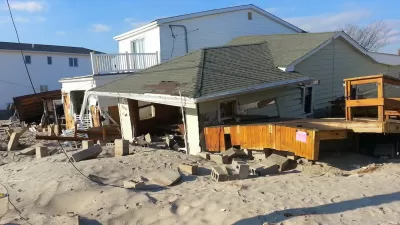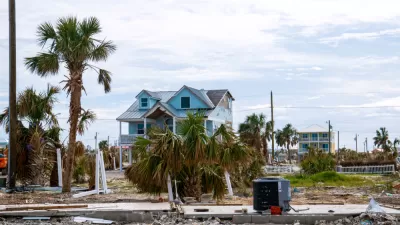The rule was designed to prevent the rebuilding of government-funded projects in areas prone to repeated floods.

The Federal Emergency Management Agency (FEMA) will stop enforcing a rule finalized last year that requires buildings receiving public assistance to be built to withstand future flood risk, whether that means relocating or elevating the building or otherwise mitigating the risk.
The Federal Flood Risk Management Standard is designed to discourage construction in areas at risk for repeated flooding, explains Robert Freedman in Smart Cities Dive. According to FEMA, “it requires agencies to determine specific federal building or project dimensions – that is, how high and how wide and how expansive a building or project should be – in order to manage and mitigate any current or potential flood risks.”
The rule is suspended while the new department leadership decides whether it should be revoked or amended. “Legal scholars say FEMA is inviting a challenge on whether it has the authority not to enforce the rule while it’s under review.”
FULL STORY: FEMA halts enforcement of flood rebuild rule, New York Times reports

Alabama: Trump Terminates Settlements for Black Communities Harmed By Raw Sewage
Trump deemed the landmark civil rights agreement “illegal DEI and environmental justice policy.”

Planetizen Federal Action Tracker
A weekly monitor of how Trump’s orders and actions are impacting planners and planning in America.

The 120 Year Old Tiny Home Villages That Sheltered San Francisco’s Earthquake Refugees
More than a century ago, San Francisco mobilized to house thousands of residents displaced by the 1906 earthquake. Could their strategy offer a model for the present?

Opinion: California’s SB 79 Would Improve Housing Affordability and Transit Access
A proposed bill would legalize transit-oriented development statewide.

Record Temperatures Prompt Push for Environmental Justice Bills
Nevada legislators are proposing laws that would mandate heat mitigation measures to protect residents from the impacts of extreme heat.

Downtown Pittsburgh Set to Gain 1,300 New Housing Units
Pittsburgh’s office buildings, many of which date back to the early 20th century, are prime candidates for conversion to housing.
Urban Design for Planners 1: Software Tools
This six-course series explores essential urban design concepts using open source software and equips planners with the tools they need to participate fully in the urban design process.
Planning for Universal Design
Learn the tools for implementing Universal Design in planning regulations.
Clanton & Associates, Inc.
Jessamine County Fiscal Court
Institute for Housing and Urban Development Studies (IHS)
City of Grandview
Harvard GSD Executive Education
Toledo-Lucas County Plan Commissions
Salt Lake City
NYU Wagner Graduate School of Public Service





























